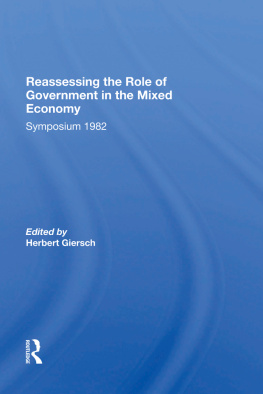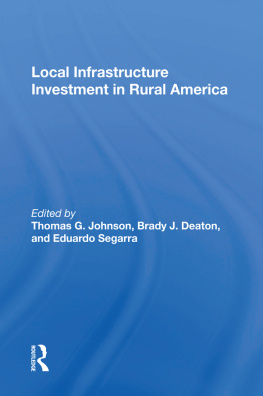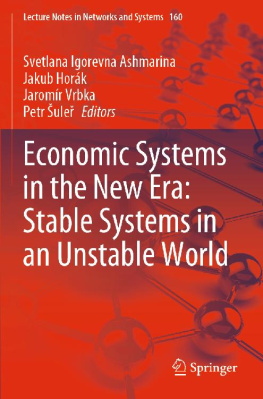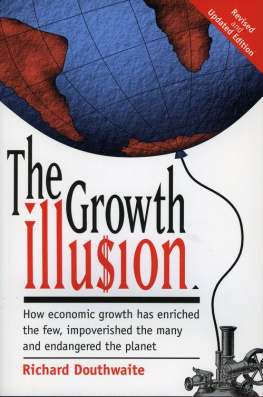First published 1989 by Westview Press
Published 2019 by Routledge
52 Vanderbilt Avenue, New York, NY 10017
2 Park Square, Milton Park, Abingdon, Oxon OX14 4RN
Routledge is an imprint of the Taylor & Francis Group, an informa business
Copyright 1989 by Institut fr Weltwirtschaft an der Universitt Kiel J. C. B. Mohr (Paul Siebeckl Tbingen
All rights reserved. No part of this book may be reprinted or reproduced or utilised in any form or by any electronic, mechanical, or other means, now known or hereafter invented, including photocopying and recording, or in any information storage or retrieval system, without permission in writing from the publishers.
Notice:
Product or corporate names may be trademarks or registered trademarks, and are used only for identification and explanation without intent to infringe.
CIP-Titelaufnahme der Deutschen Bibliothek
ISBN 13: 978-0-367-28709-2 (hbk)
This volume is the outcome of the 19th Kiel Week Conference held at the Institute of World Economics, 22-24 June 1988. It contains the revised versions of the papers and comments submitted after discussion.
As in previous years, the purpose of the conference was to explore a subject of relevance for economic policy. This time, we focused on services and their increasing importance for industrialized and developing countries and for world economic growth and trade.
The first paper, presented by Herbert Grubel, describes the origins of service-sector growth and the main driving forces behind it. Using Canadian data, Grubel demonstrates that the share of producer services in GDP has grown faster than that of other services. He also shows that producer services raise productivity in the production of goods. Finally, he points out that trade in producer services is linked more to capital flows or to trade in goods than directly to the movement of persons. Therefore, we should learn more about these indirect forms of trade in services.
The description of service-sector growth was expected to raise the conceptual problems of how to define and measure output and productivity in this sector. Domenico Siniscalco's paper addresses itself to this problem. It does this by explaining the standard approach and comparing it with an innovative alternative one.
Seev Hirsch, in the third paper, contributes to the debate on the role of services in international trade, his main point being that trade in services is not essentially different from trade in goods, since the latter also involves some form of interaction between users and suppliers. He comes to the conclusion that the potential for trade in services and service-intensive goods would be enhanced not only by reducing restrictions but also by new technologies, such as telecommunications, that curtail the need for face-to-face interaction.
The fourth paper deals with the question of how to incorporate trade in services into traditional comparative advantage theory. Peter Gray is sceptical because the characteristics of services are so manifold, just like those of goods. Therefore trade in services cannot be explained only by relative factor prices as emphasized by the neofactor proportions theory. Other variables such as technology differences or communications linkages are crucial to explain trade in services. He suggests a more empirical approach to look at individual sub-categories of services and their characteristics.
John Dunning, in the fifth paper, shows how the growth of the service sector is related to the proliferation of multinational enterprises. Firms, when preferring foreign production to trade in services, do not only consider factor endowments but also regulatory patterns as well as their own internal organizational structure.
In the two subsequent papers, the telecommunications sector is the focal point. While Gerald Faulhaber describes how important this sector has been for the development of financial and retail services in Europe, Gunter Knieps analyses the results that have been achieved by deregulating it in the US, Japan and Great Britain. Both underline the importance of deregulating telecommunications for service-sector growth.
Robert Aliber looks at the banking industry in an international context. In his paper, he wonders why most of the banking offices are owned by domestic firms. In order to explain this, he considers locational advantages, barriers to entry and to take-overs, portfolio requirements and interest rate ceilings, etc.
Brian Hindley, in turn, concentrates on transportation services. On the one hand, they are a factor of market integration, on the other hand, they are heavily regulated, with barriers to entry rooted in bilateral agreements. He is not sanguine about whether a substantial improvement could result from multilateral negotiations. Indeed, even bilateral negotiations would be slow to bring progress.
In the last paper of the conference, Rolf Langhammer uses empirical data from four OECD countries to show that North-South trade in services is far from negligible and extends beyond mere "transport and travel" to other private services such as advertising, insurance, or construction. Furthermore, he considers that the specialization patterns in services of the four industrialized countries are similar to those for manufactured goods. He also points out that the importance of developing countries for service exports differs from country to country. Because government interventions and factor endowments are inextricably intertwined their separate impact on patterns of trade in services cannot be identified.
The Institute is indebted to the authors and discussants and to those who made this conference possible. The Deutsche Bundesbank provided financial support. We owe thanks to the Landeszentralbank Schleswig-Holstein, the City of Kiel, the Dresdner Bank and the Ober-postdirektion Kiel for their hospitality. Seev Hirsch gave valuable help in preparing the conference and Axel Busch ensured that it was organized efficiently. Credit is also due to Fiona Short and Dietmar Gebert for their painstaking efforts in giving this volume its final shape.
Kiel, March 1989
Herbert Giersch
Herbert G. Grubel
Michael A. Walker
Introduction
The growth of service-sector employment and GDP in industrial countries has been significant in the 20th century and has reached levels which have given rise to all kinds of theorizing and speculation about its causes and effects. illustrate this development for Canada in terms of employment, showing that service-sector employment has grown from near 35 per cent to over 70 per cent of the total between the census years 1911 and 1981. Employment in the service sector has exceeded that in goods production since 1958. Very similar developments have taken place in other industrial countries and with respect to the growth in GDP, as is documented below.
In this study, we review briefly the existing body of knowledge relevant to an explanation of the causes and effects of this growth of the service sector..
Review of the Literature
Hill [1977] discusses definitions and conceptual issues surrounding the service sector. While these issues are interesting and important, in this study we approach them pragmatically. The service sector is what the UN system of national accounts and most national statistical offices record as such in terms of employment and GDP. The possible develop














